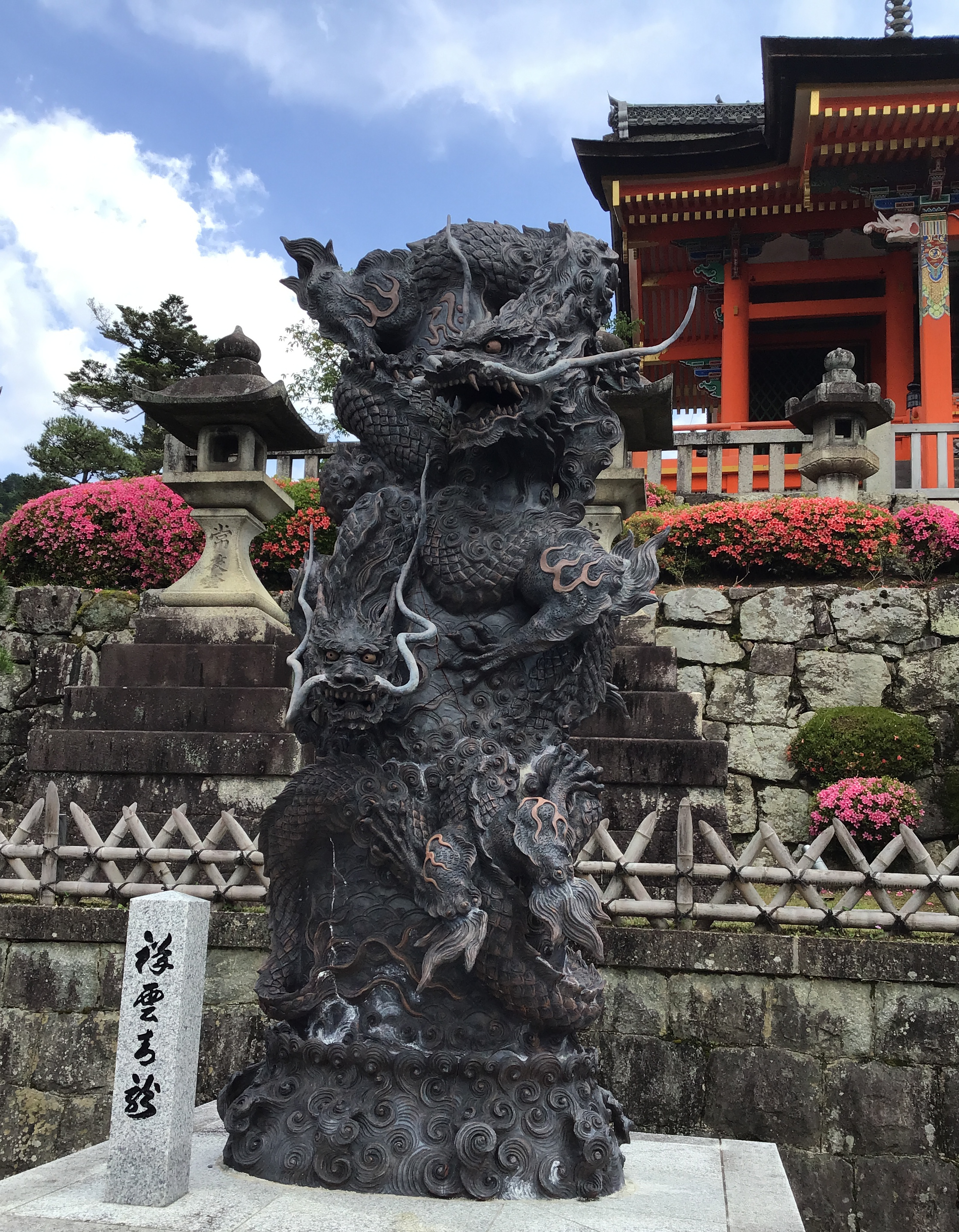
For my wife's birthday, we went to Kyoto. These are the pictures from that trip. This is the second blog of that trip, but they are not in chronological order, so it doesn't really matter if you read them in a different order.

Most of the trip was going to temples, as there are a bunch of temples in Kyoto. There are a lot of temples in Japan, which I suppose is true of most every place in the world, but I don't know that you can visit temples in other parts of the world like tourist attractions. Like, if you went to a random city in the US, there would probably be a lot of churches (aka christian temples), but you probably wouldn't want to go to each one and look inside and take pictures. There are exceptions of course, cathedrals are usually impressive, and you could probably take pictures in them. I don't know if it's the same thing here, there might be a bunch of temples that no one goes to, and then the really flashy temples that people go to and take pictures of.
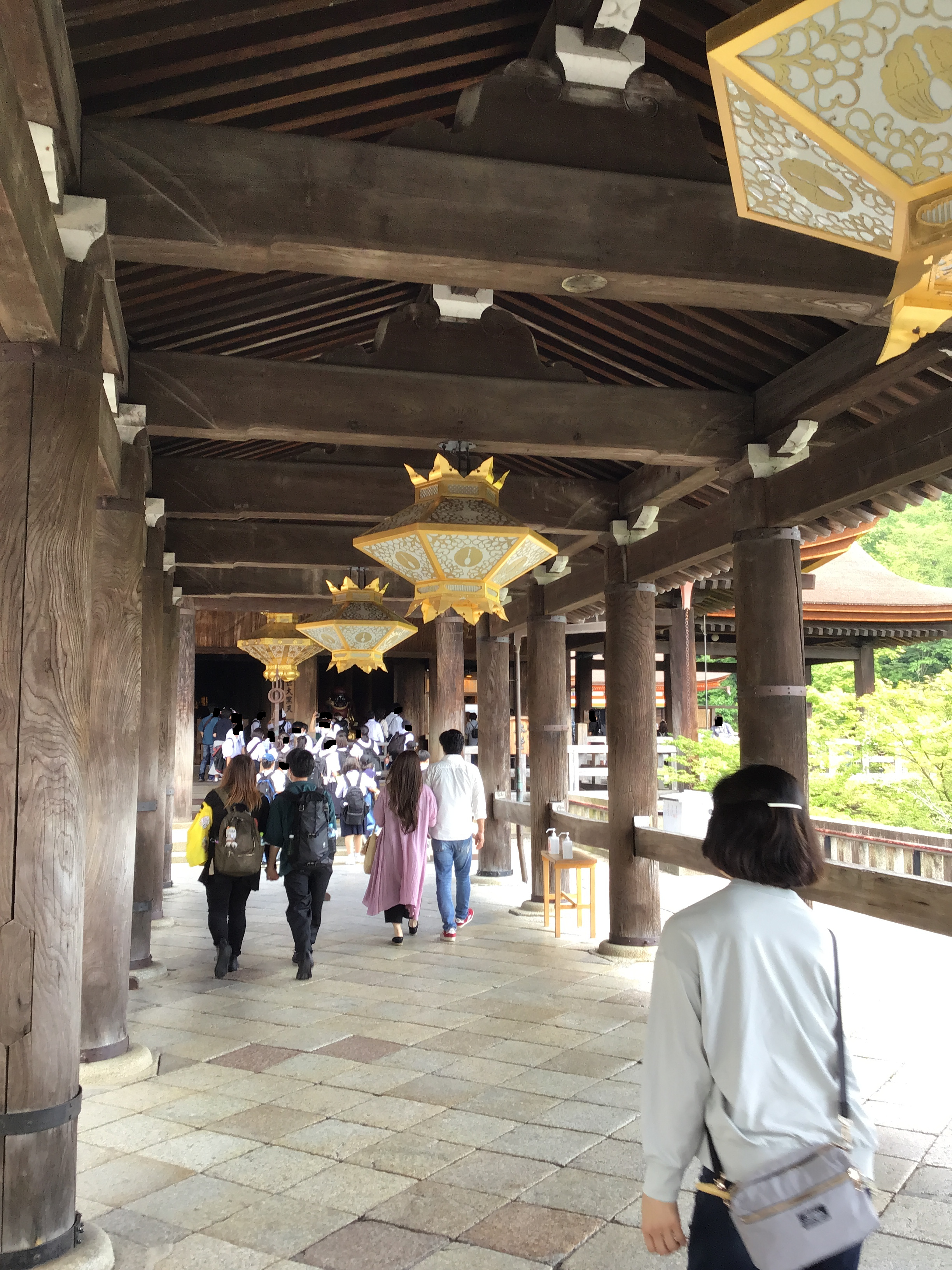
Kiyomizu is a buddhist temple. In English, Buddhist locations are called temples and Shinto locations are called shrines. I'm not sure what the Japanese words for that distinction are, but I know that I've been taught it in the past. It's strange to me that they use this much gold decoration in their devotion to Buddhism. I mean, I'm not the authority on what you can and can't do in your worship methods, but that's an awful lot of gold for philosophy of detatchment from material possessions. On the other hand, if your day job was a gold miner or gold smith, and you wanted to be a good buddhist, you could give all of your gold to the monks in the temple, trusting them to do the best things with it. That way you could give up your possessions, but the temple would have a bunch of gold.
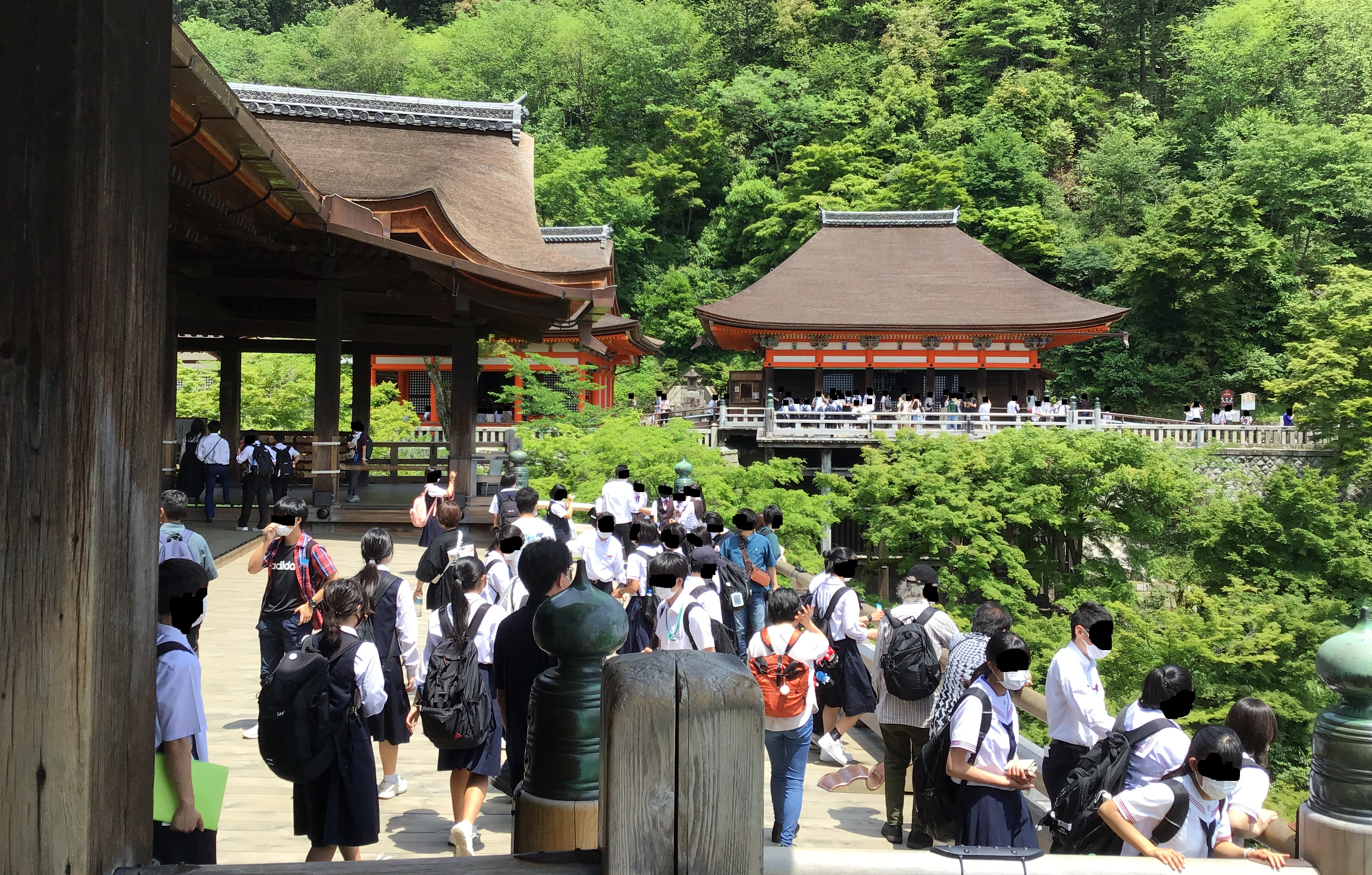
This is one of the more popular temples in Kyoto. It's on the level of popularity that means it appears on tourist flyers and posters and such. Now that I've been there, it's really cool to see it in media. I've seen YouTube videos where people talk about Japan, and they show a montage of of images of famous places, and I've been to a couple of the places now. I haven't been to most of the famous landmarks in the US, but I've hit about half of the famous places in Japan now.
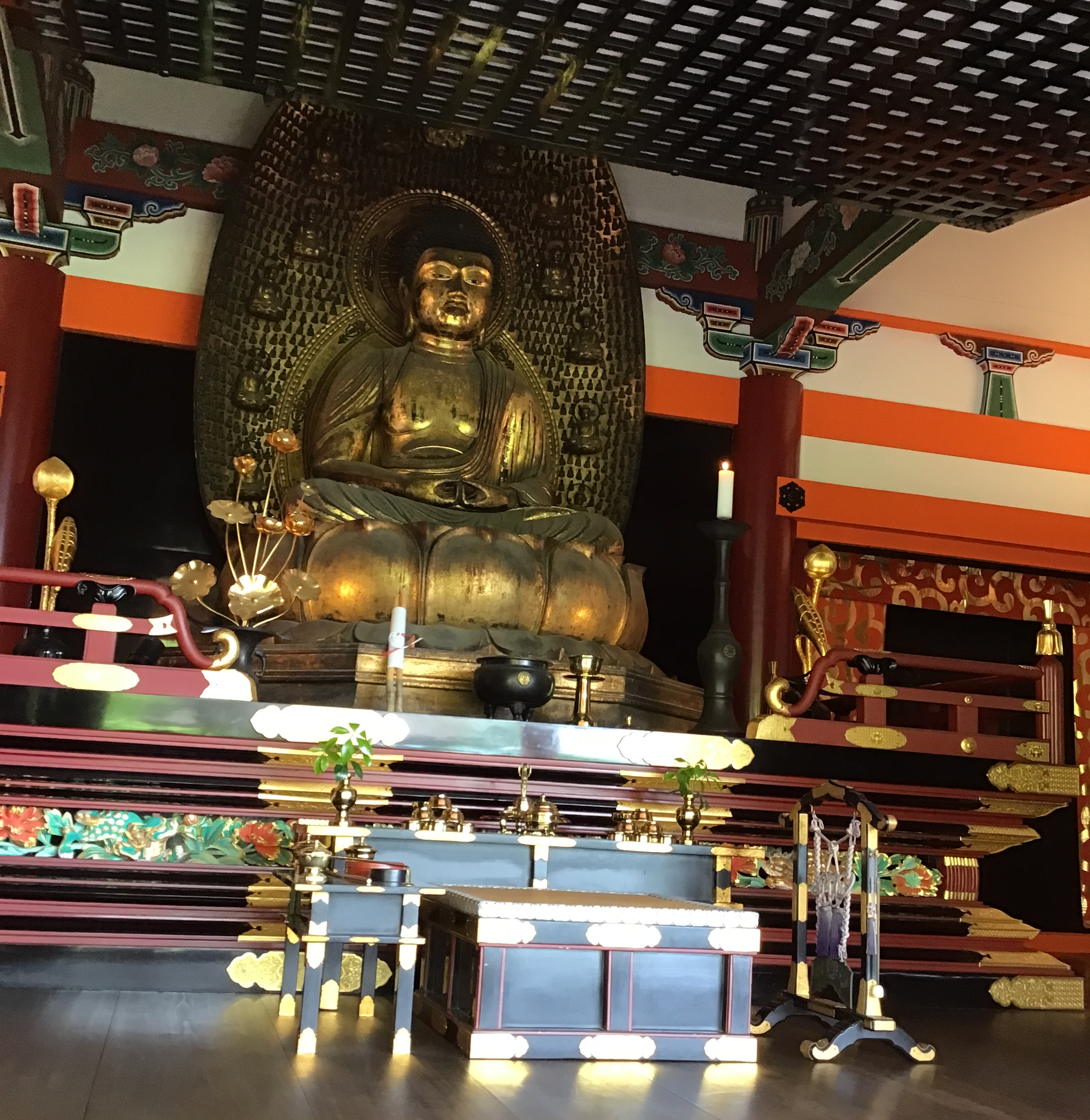
More golden statues. More questions about the meaning of it. I suppose part of the golden idol imagery contributes to the popularity. Hard-to-get-to temples that don't have a lot of shiny idols don't have as many visitors. I guess you probably want a combination of the two? One to get people in, and one to get them on the path? Maybe there is a wisdom in that.
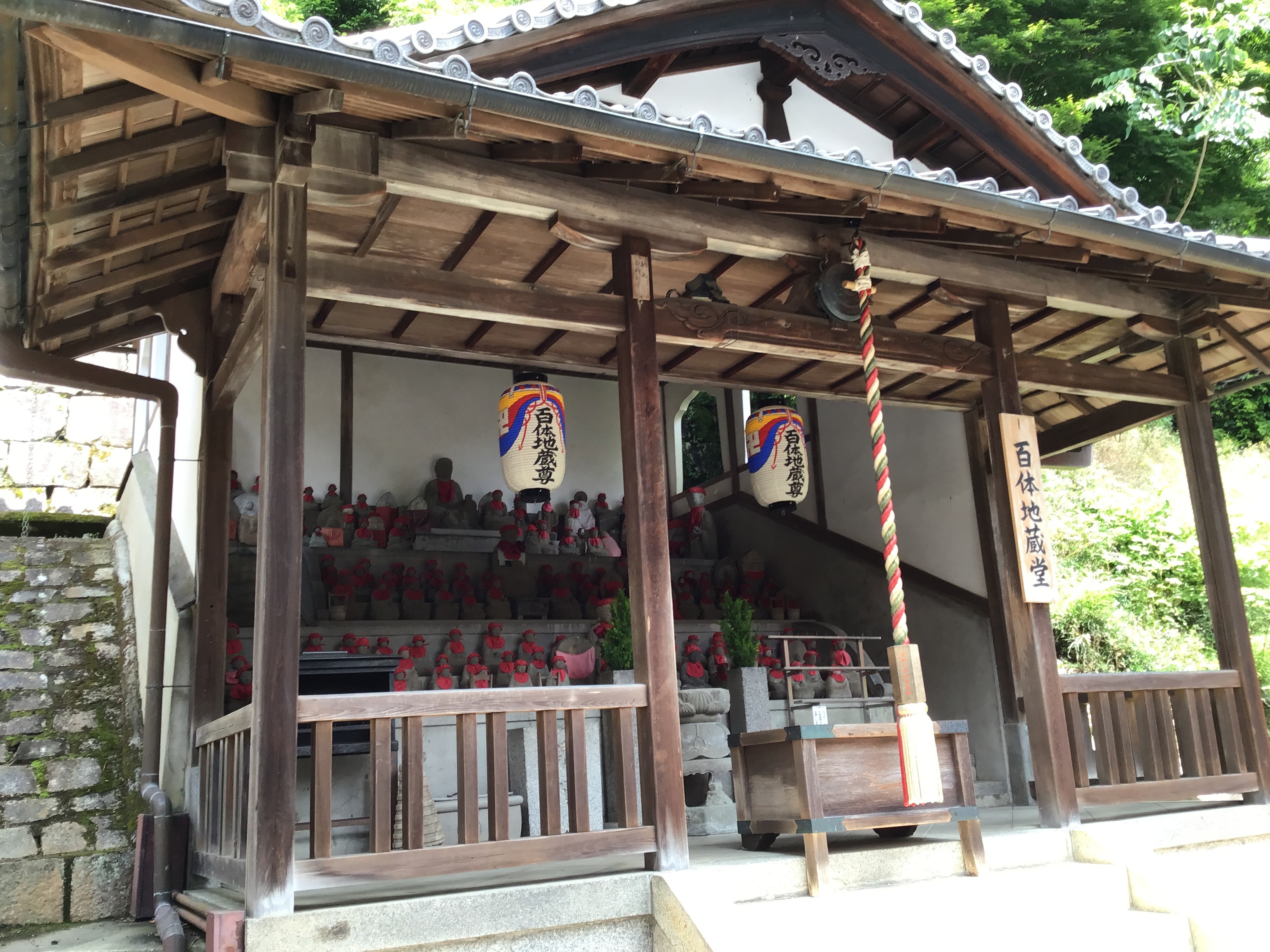
I've shown pictures of these before, they are statues of monks that previously served in the temple. This one does not have as many as other shrines. They have hats and scarves to keep them warm. Someone started that tradition, and now every monk statue has them.
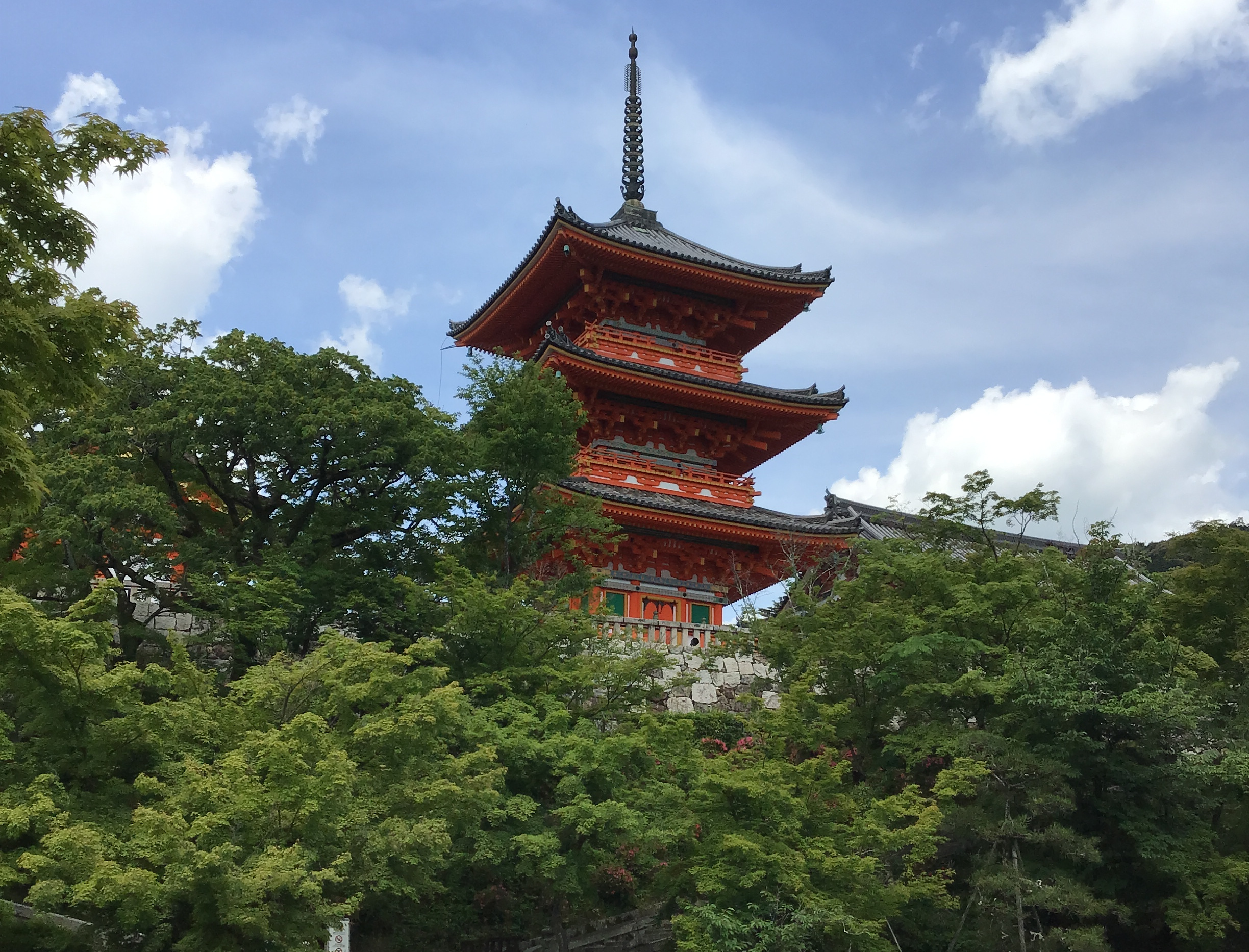
I don't know why they used the Shinto red color for this pagoda. I'm pretty sure that this was the same temple, and I'm pretty sure that it's a buddhist temple, and I'm pretty sure that this color is common to the Shinto faith, not the Buddhist faith, so I don't know why it's here. Maybe they have a time sharing deal set up? I don't know how much overlap there is to the two faiths, if they are happy to share members, or if they feel like you can't be a part of both faiths.
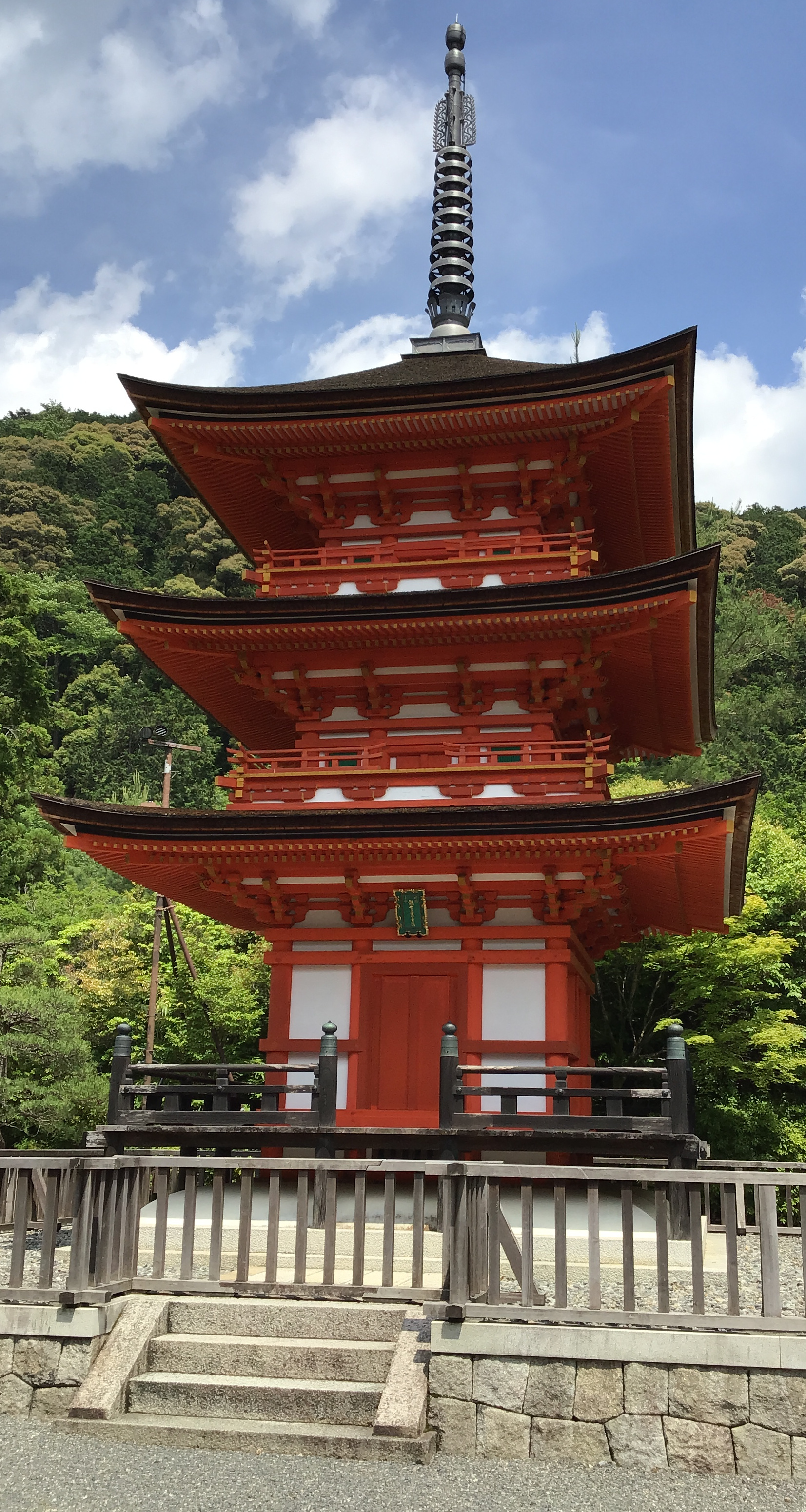
I think this pagoda is cool, it's got a metal thing on the top that looks like a retro sci-fi icon like a ray gun or a spaceship. I have no idea what it's there for, but they look cool.
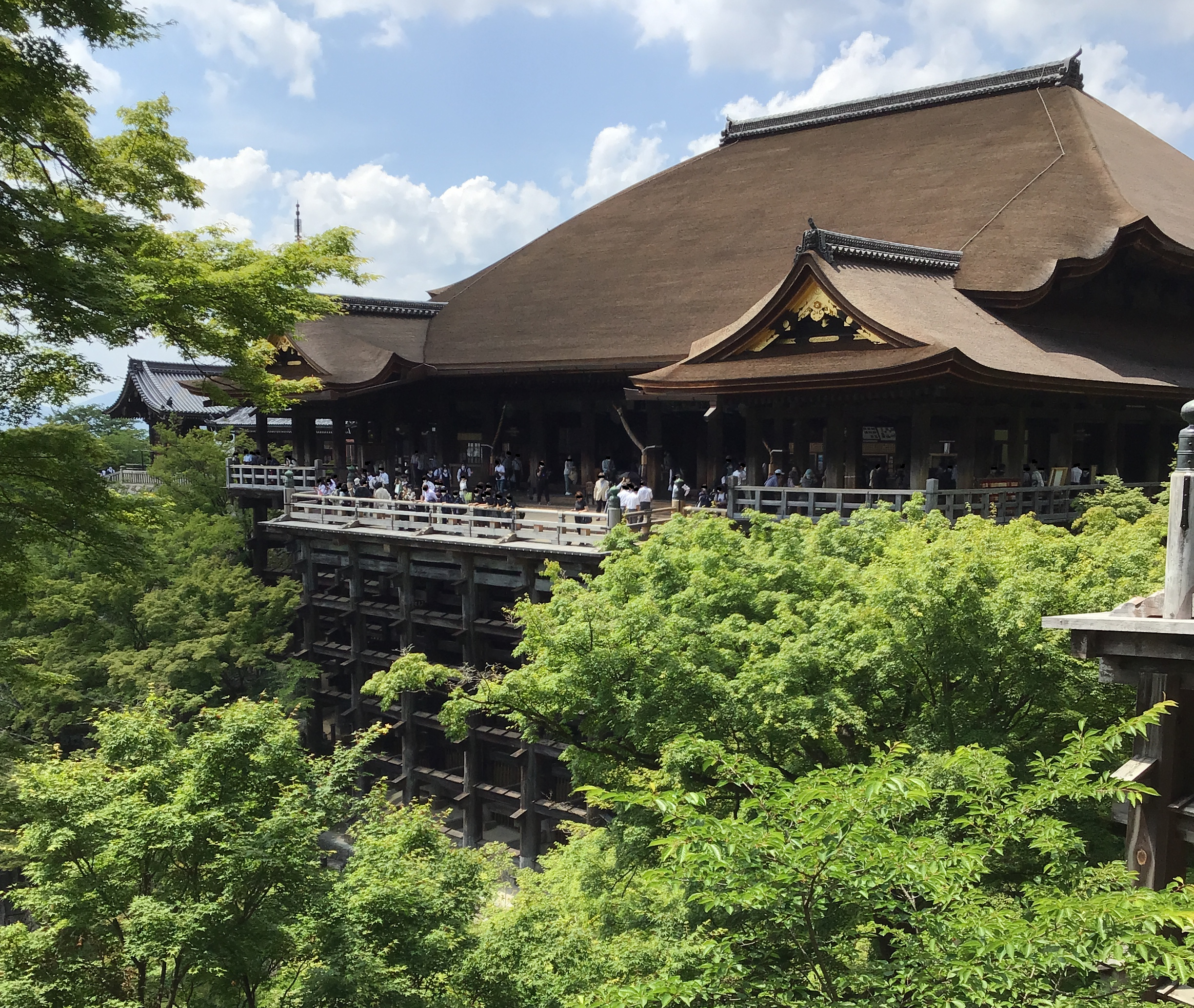
This is the main building in the Kiyomizu Temple complex. It has a wooden trellis foundation underneath it that looks really cool. I don't know how many times it's been rebuilt, but a lot of the temples here have signs that explain that the temple burned down in such and such year, and then they were rebuilt in such and such year. I can't imagine that this is the original wood foundation. Even the stone foundation in the castle near me is not the original. They really nailed the aesthetic that they were going for. I guess this temple, as one of the most famous in Japan, really defined the aesthetic, more than followed it, so in that regard it was easier. I feel like if you pave the way with something impressive and then everyone follows you, it doesn't really matter what aesthetic you had, because people are going to attribute genius to it. Like Isaac Newton, he had a great achievment and now his aesthetic is mimicked in other works, not because it's applicable there, but because people want to be associated with that genius.
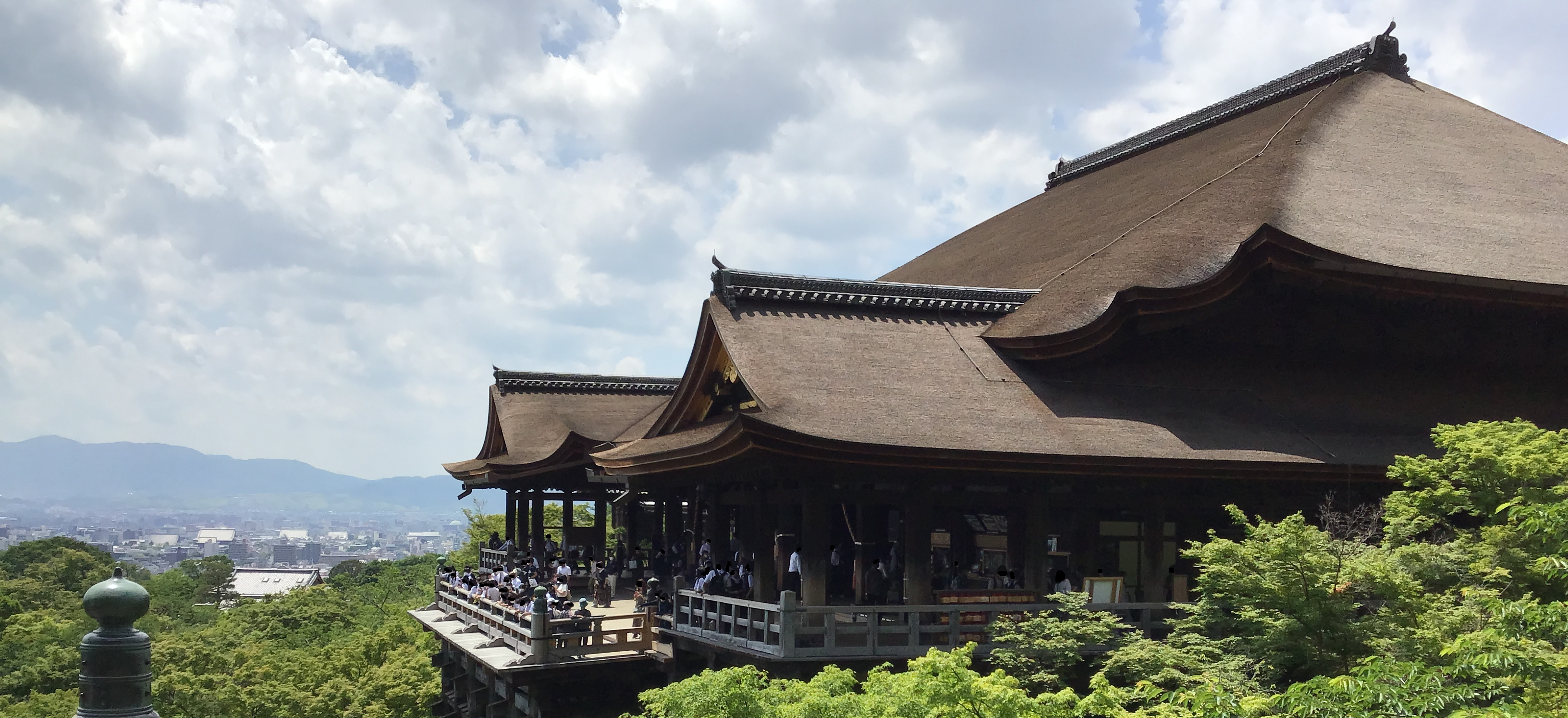
Here's another angle of that same temple. The views are great, the forest is well kept and it fits in next to the temple really well. The color palette is simple and complementary, adhered to, and incorporated gold, which is always a plus for a temple. Call me a cynic, but they definitely knew what they were doing when they created this. Well, or they got extremely lucky. Without knowing what other projects were going on at the time, it's hard to say. I guess call me a cynic either way.
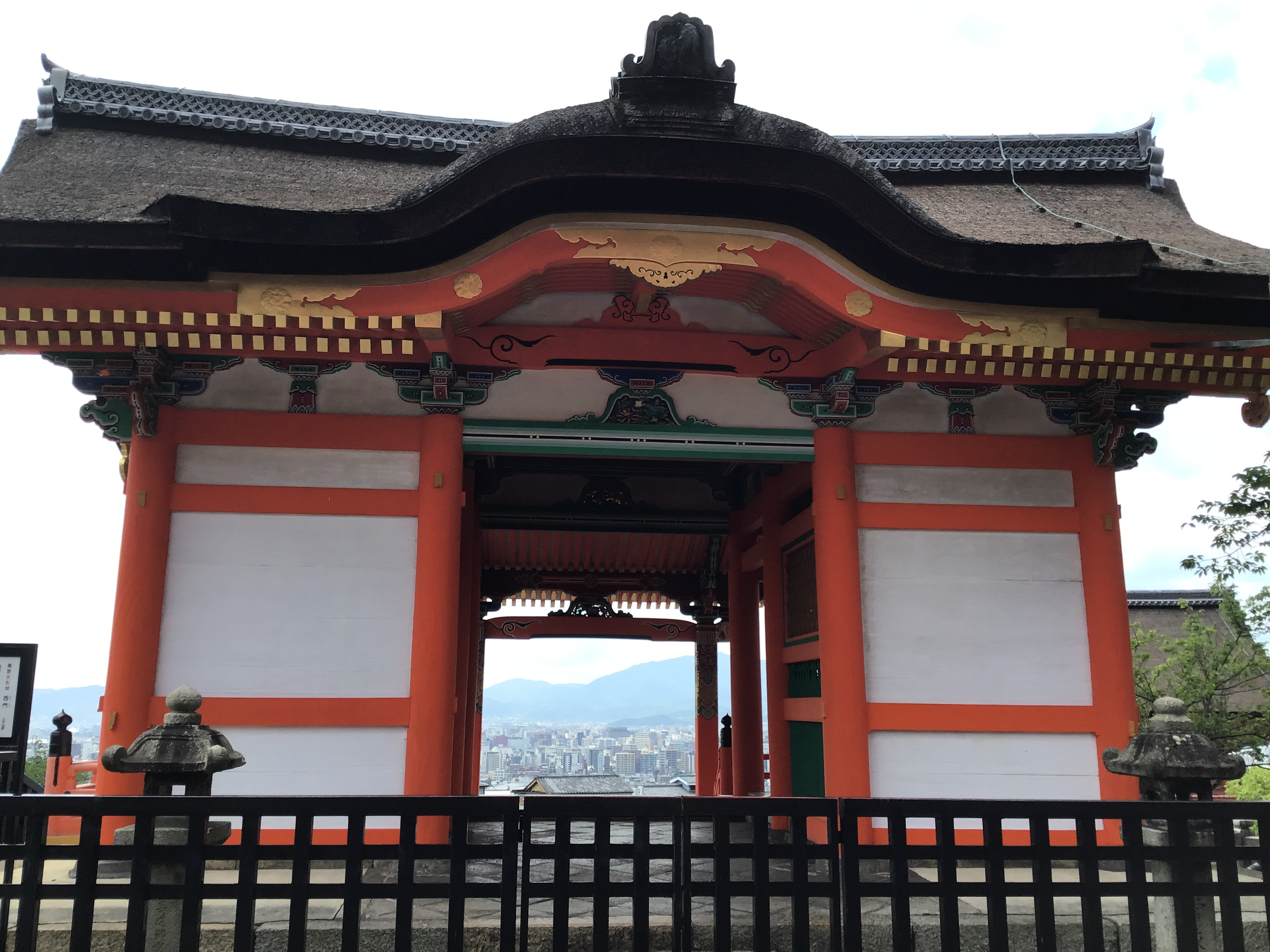
This isn't the greatest of these kinds of shots, but I like the shots that show the old traditional side of Japanese culture along with the modern cities. Both very much exist in Japan. I see the traditional side as a curiosity, an attraction, an amusement. I don't believe in Buddhist or Shinto faith, but I appreciate the architecture of the buildings. That's the kind of art that I'm most interested in. That attraction is not unique to the traditional side of Japan, some buildings in the modern world are artistically built. Not all of them, but then again, not all of the traditional buildings looked nice either. Many of them were not pretty enough to be preserved, a terrifying thought. Will the most beautiful buildings that are built today be preserved by people hundreds of years from now? Or are we self centered enough to think that we are the last people who will make buildings that might be ugly enough to be torn down.
SarisonZero lives and works in Japan. He's preparing to run a third DnD game and considering his options.